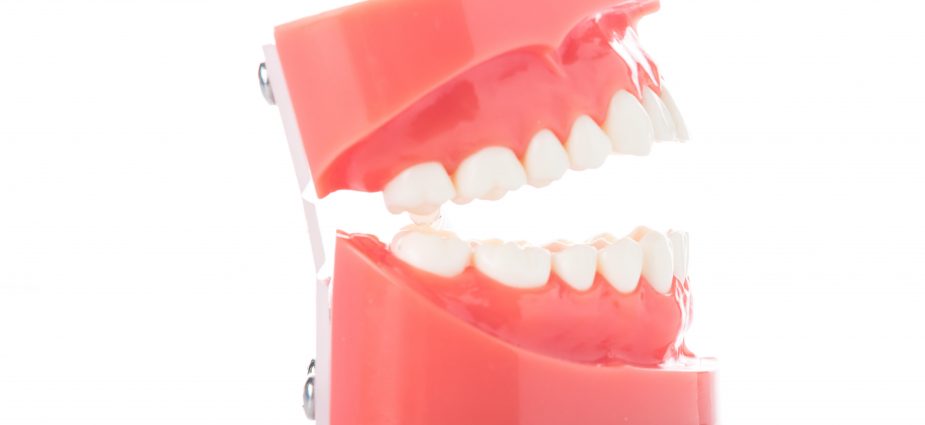Neuromuscular Dentistry

Neuromuscular dentistry is an approach to dental treatment that focuses on the correction of jaw misalignment. Neuromuscular dentists determine the optimal position of the jaw in order to correct misalignment and adjust how the upper and lower teeth come together (occlusion). By realigning the jaw joint through the use of cosmetic dental restorations, tooth recontouring (equilibration) or orthodontics, dentists strive to alleviate stress from the jaw muscles and eliminate painful symptoms of temporomandibular joint disorder (TMJ or TMD).
What differentiates neuromuscular dentistry from other theories of occlusion that may guide dental treatment is its emphasis on gravity as determining the bite, as well as where the jaw muscles are most relaxed.
Beginning of Neuromuscular Theory
Neuromuscular dentistry was introduced in the late 1960s/early 1970s by Dr. Bernard Jenkelson, who examined the relationship of the upper and lower jaws. However, he did not limit his examination to the teeth, but also investigated the relationship among the muscles, nerves, bones and two temporomandibular joints (TMJs).
With the assistance of his son, Dr. Bob Jenkelson, he developed equipment to locate the ideal position of the lower jaw, which was determined to be where the jaw muscles are most comfortable. According to Dr. Jenkelson and neuromuscular theory, when the teeth, jaw muscles and TMJs are not aligned, TMD symptoms occur.
Diagnosis
In addition to X-rays or digital radiographs that reveal the position and condition of the jaw joints, dentists use several diagnostic technologies in order to determine the ideal position of your jaw to relieve TMD symptoms. These technologies include:
- Computerized equipment to record the resting position of a person’s jaw, how it closes and any other movements
- Electromyography (EMG) to measure the stressed and relaxed positions of a person’s jaw muscles, as well as identify any structural defects in the jaw joint
- Sonography, and/or Joint Vibration Analysis to record jaw joint sounds and determine the presence of abnormalities
Treatments
If the jaw is not properly aligned, neuromuscular dentistry may help to address the precise cause of the problem — whether jaw joint, muscle or tooth position. Treatment plans developed by dentists are designed to correct bite abnormalities by allowing the jaws to go to their optimal positions for the long term.
For example, dentists assert that muscle pain and spasm can be relieved using Ultra Low Frequency Transcutaneous Electrical Neural Stimulation (ULF-TENS). This treatment involves placing electrodes on your jaw, neck and shoulder areas that transmit mild electrical stimulation to repeatedly contract the jaw muscles in order to relax them.
Adjustments to a person’s bite can be accomplished using an oral appliance — such as a splint or mouth guard — until the bite has been permanently stabilized. Or, orthodontic work may be required to ensure proper alignment, in addition to dental restorations such as crowns, or tooth recontouring (equilibration).
Cost of Treatment
The cost of neuromuscular treatment depends upon your clinical situation and the procedures necessary to treat your condition, the expertise of the dentist, the location of the dentist, and the type of dental insurance you have. It is possible that you may receive a 15 percent reimbursement, or a maximum 50 percent absorption of the total procedure costs.
However, keep in mind that neuromuscular treatments may require full mouth reconstruction, and the approximate cost (at a minimum) could be about $1,000 to $4,000 per tooth. That figure does not include any charges for oral surgery, crown lengthening, periodontal treatments, etc. It is reasonable to expect a full mouth reconstruction to cost approximately $40,000 to $90,000.
Check with your dentist and your dental plan before agreeing to any treatments to determine what the total cost will be. Third-party financing is available through your dentist’s office to assist you in making affordable monthly payments.
It is important to note that neuromuscular dentistry techniques are not the only methods for successfully treating TMD symptoms, or for developing treatment plans for occlusal and bite adjustments. To locate a qualified specialist, consult with your general dentist.


